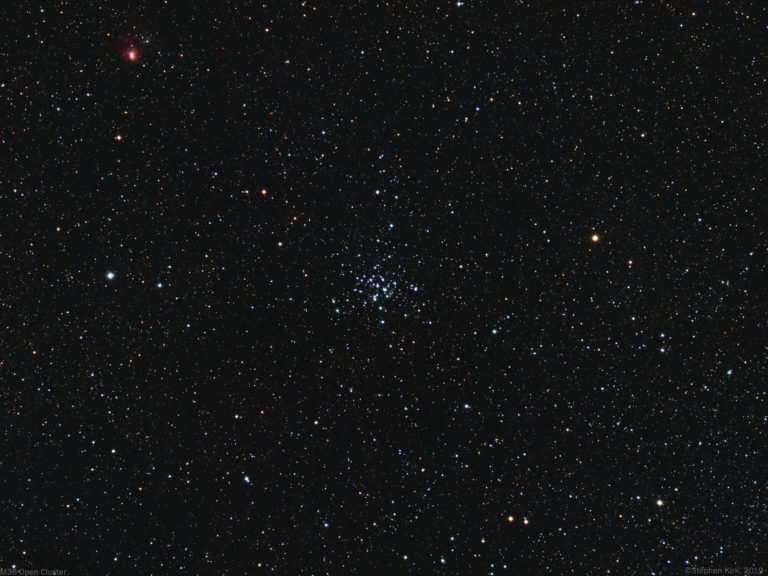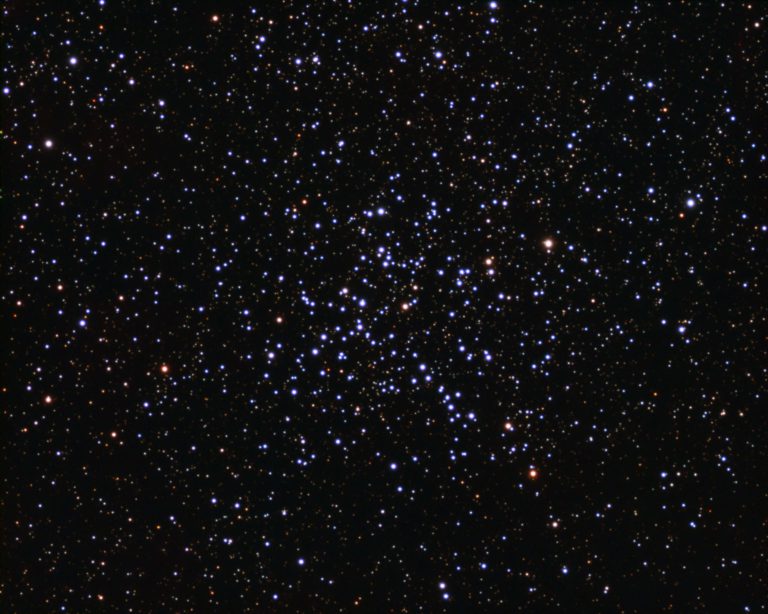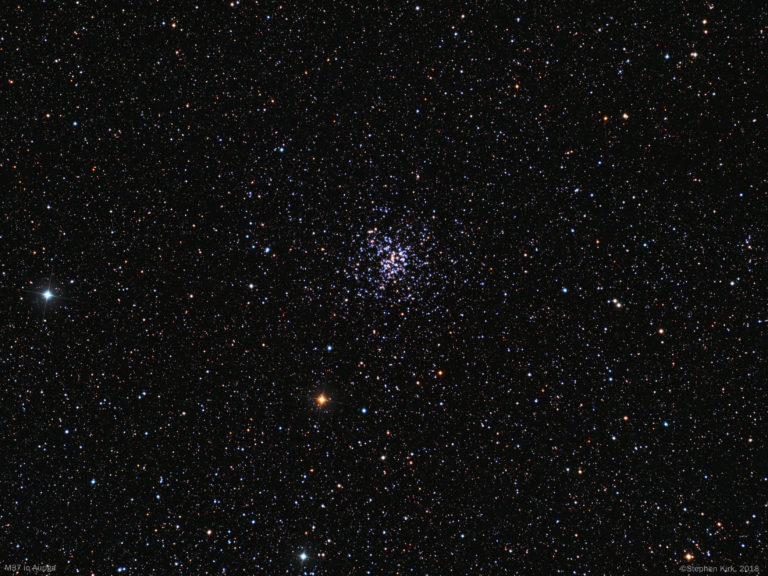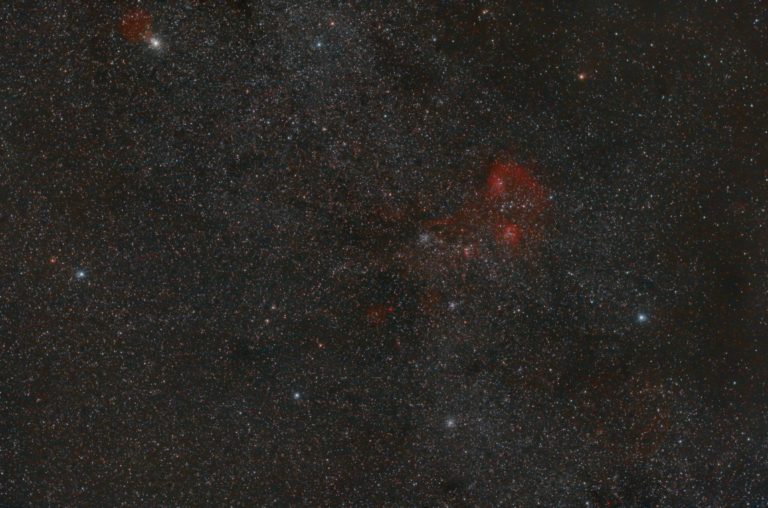M36 is an Open Cluster of stars (as opposed to a Globular Cluster) in the Constellation of Auriga. M36 is high overhead in Europe during the nightimes of winter months and is one of three Messier Open Clusters in Auriga, the others being M37 and M38. All of these are visible in a small pair of binoculars as nebulous and fuzzy blobs. M36 and the other clusters make a fine site in a telescope and dozens of stars can be seen. Note also the Red nebula to the top left – NGC 1931 (Sh2-237). There are some tiny PGC catalogue galaxies, billions of light years away in this image. M36 Open Cluster in Auriga This image was taken from by backyard in Nottingham, UK on the 24th January 2018 with my Takahashi FSQ85 refractor and Moravian instruments G21-8300 CCD camera with Astrodon RGB Generation 2 E series filters on MESU…
M38 is the third of three Messier Open Clusters in the constellation of Auriga, in the Northern hemisphere of the sky. The other two Messier clusters are M36 and M37. All of them are easily visible with binoculars and are seen as faint smudges against the darker background. If you read my post on the Constellation of Auriga you will see all three of the Open Clusters in the same image M38 Open Cluster Image Technical Data Imaged from my back yard in Nottingham, UK on the 18th January 2020 whilst high overhead from my location. I used my TEC 140 refractor with Atik 460 cooled CCD camera and Astrodon RGB E Series Generation 2 filters. I used my MESU 200 mount guided with OAG. All exposures binned 1×1: Red > 12 x 180s ; Green > 14 x 180s ; Blue > 13 x 180s. This gives a total integration…
M37 is one of the three Messier Open Clusters in the Constellation of Auriga – the other two being M36 and M38. It is about 4500 light years away and contains several red giant stars, visible in this image, making it the richest of the three Auriga Messier Open Clusters. M37 appears high overhead from my 53 degree norther location during the winter months making it an ideal target for visual observations and imaging. It makes a fine site in a telescope and appears as a fuzzy ball in a pair of binoculars. M37 Image Technical Data Imaged from my backyard in Nottingham, UK on the 9th February 2018. I used my Takahashi FSQ85 refractor and Moravian G2-8300 cooled CCD camera with Astrodon RGB filters. All expsoures are binned 1×1.Red > 12 x 120s ; Green > 12 x 120s ; Blue > 12 x 120s M37 Annotated Version M37…
Auriga – A famous constellation in the winter Northern Hemisphere sky, Auriga contains many very interesting objects and nebulae. Arguably the most important of these objects are the famous Open Clusters M36, M37 and M38, all of which I have imaged individually. This image was taken in January 2020 from my backyard in Nottingham, UK on my modified (i.e. with the IR filter removed) Canon DSLR 1100D and a Canon 50mm lens. It is composed of 80 x 90s exposures at ISO 800 at F4, mounted on a Skywatcher Star Adventurer sky tracker mount. Astrophotography does not have to be expensive and you can achieve great things with a DSLR and a tracking mount! Auriga Below, to the left, is an annotated version of the above picture and it shows many of the interesting objects present within the constellation of Auriga. You can see the many Sharpless catalog (Sh2) objects…




